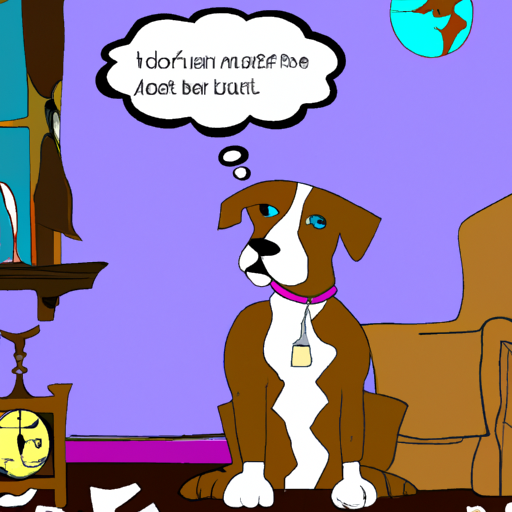Introduction
Separation anxiety in dogs is a serious condition that every dog owner should be aware of. As a loving caregiver, it is essential for you to understand the signs and symptoms, and how to provide the best possible care for your furry friend.
What is Separation Anxiety in Dogs?
Separation anxiety in dogs is a stress response that occurs when a dog is left alone or separated from their owners. Your pup may become anxious, scared, or even destructive. This intense attachment and fear of being alone can lead to various physical and behavioral symptoms.
Recognizing the Signs of Separation Anxiety
- Excessive Barking or Howling: If your dog is barking or howling more than usual, especially when you’re not home, this could be a sign of separation anxiety.
- Destructive Behavior: This could include chewing on furniture, scratching at doors, or any other unusual destructive behaviors.
- Urinating and Defecating: Some dogs may urinate or defecate in the house when left alone, even if they are house trained.
- Pacing: Some dogs may walk or trot along a specific path in a fixed pattern when left alone.
- Escaping: A dog with separation anxiety might try to escape from an area where they’re confined when you’re not home.
Causes of Separation Anxiety
| Event | Explanation |
|---|---|
| Change in Schedule | An abrupt change in the time you spend at home can cause separation anxiety. |
| Change in Residence | Moving to a new place can trigger separation anxiety. |
| Change in Household Membership | The sudden absence of a family member, either due to death or moving away, can trigger this condition. |
| Time in Shelter | Dogs that have spent time in a shelter can sometimes develop separation anxiety. |
How to Help Your Dog Cope with Separation Anxiety
There are several ways to help your dog cope with separation anxiety.
- Counterconditioning: This involves changing your dog’s fearful reaction to a pleasant, relaxed one instead.
- Desensitization: You can gradually get your dog used to being alone by starting with short separations that do not cause anxiety and gradually increasing the length of time spent alone.
- Medication: In severe cases, medication may be necessary. Always consult your vet before starting any medication.
When to Seek a Vet’s Help?
If you’re noticing signs of separation anxiety in your dog, it’s important to consult with your vet. They can provide an accurate diagnosis and guide you on the appropriate treatment methods.
Preventing Separation Anxiety
Prevention is always better than cure. Starting from when they are a puppy, try to get your dog used to being alone. Also, ensure your dog gets plenty of physical and mental exercise daily.
Frequently Asked Questions
Can separation anxiety cause physical harm to my dog?
Yes, in severe cases, dogs can harm themselves while trying to escape or due to excessive grooming habits caused by anxiety.
Are some breeds more prone to separation anxiety?
Separation anxiety can affect any breed, but it is more common in breeds that are extremely attached to their owners.
Can I cure my dog’s separation anxiety completely?
With patience, consistency, and possible professional help, most dogs can overcome their separation anxiety.
Is it okay to punish my dog for destructive behavior caused by separation anxiety?
No, punishing your dog will only make the anxiety worse. Instead, focus on positive reinforcement and consult with a professional for help.
Conclusion
Remember, as a caregiver, the key to handling separation anxiety in your dog is patience, love, and understanding. With the right approach, you can help your dog live a happy, anxiety-free life.



